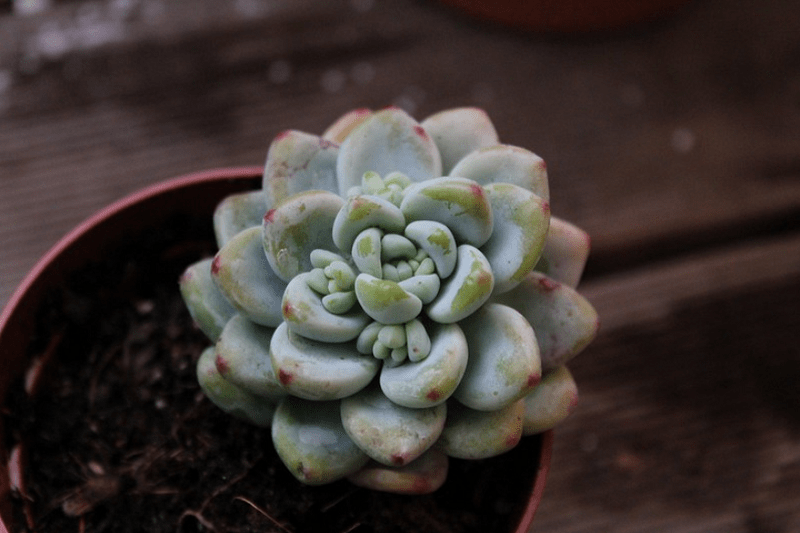Sedum clavatum is an attractive succulent perennial hailing from Mexico and a member of the Crassulaceae family.
Sedum, in general, is commonly called stonecrop because they need a little more care than stones.
It’s also known by the common name Tiscalatengo Gorge Sedum.
Sedum clavatum has round bluish-green leaves that form a beautiful rosette shape.
It works well as a ground cover or in a hanging basket.
Sedum clavatum is an evergreen succulent.
It makes an excellent ground cover, as it spreads and trails, and works well in hanging baskets.
Watch for small white flowers to bloom in the summer.
When Sedum clavatum’s bluish-green leaves are stressed, the tips turn a beautiful light pink.
For this reason, it’s best to grow it outdoors.
If grown inside, it tends not to thrive and will lose its color.
You may like pachypodium lamerei
Tips to take care of the Sedum clavatum
Substratum
The Sedum Clavatum prefers to grow on rocky substrates, but it can also be sown on any type of cactus substrate.
It is very important that no matter what type of substrate you use, you must have good drainage to prevent the roots of the Sedum Clavatum from rotting.
Irrigation
The Sedum Clavatum needs very little water to survive throughout the year since it is very resistant to drought.
It is essential that when watering the Sedum in summer, let the substrate dry between irrigation and irrigation.
And in winter times reduce irrigation as much as possible to prevent its roots from rotting.
A singularity of Sedum Clavatum is that it adapts admirably to drought thanks to the ability to store water in its thick leaves.
Temperature
The ideal temperature for Sedum is a cool to warm temperature.
For perfect growth and flowering the temperature between 15-26 ° C.
Tolerates temperature drops if the substrate is completely dry.
Illumination
The characteristic reddish color of the Sedum Clavatum will be opposed with full sun exposure.
The Sedum Clavatum grows perfectly in full sun as well as in semi-shade.
When the sedum is in semi-shade its leaves have a more greenish color.
You should only take care of the plant from the intense sun of noon in summer.
Plagues and diseases
The Sedum is very resistant to pests but some can appear regularly the mealybugs mainly in the unions of the leaves to the stems.
Some mollusks (snails and slugs) can devour sections of the leaves or apical shoots of the younger stems.
Propagation
It can be propagated from cuttings of stems or leaves.
Just cut a stem very carefully and then let the cuttings (the cutting region) dry for 24-48 hours before being sown.
Then sow the cuttings on a special cactus substrate.
Soil & Transplanting
As with all cactus and succulents, well-draining, airy soil is best for sedum.
A commercial cactus or succulent mix will work fine.
Alternately, combine standard potting soil and coarse sand 50/50 for container plants.
In the garden, amend the soil with sand or fine gravel.
Succulents should be transplanted or repotted when the roots and soil are dry.
Transplant into dry soil and allow a few days for the plant to settle before watering.
Fertilizer
You must only pay the Sedum in small amounts during the spring and summer and stop the subscriber the rest of the year.
Only use a specific subscription for cactus and follow the instructions on the packaging.
Flowering Period
It blooms in summer.
This is a very beautiful plant to have it decorated in your home or office.
It is also ideal to put them in a pot with other succulents and give a different touch to your collection of plants.
Conclusion
Sedum Clavatum is easy to care for and thrives in less than hospitable conditions.
They are great outdoor succulents for areas of your yard getting lots of sun and little water.
In addition to being a good groundcover plant, clavatum does well as a succulent hanging basket plant.
Its rambling, trailing growth habit causes it to tumble attractively over the sides.
